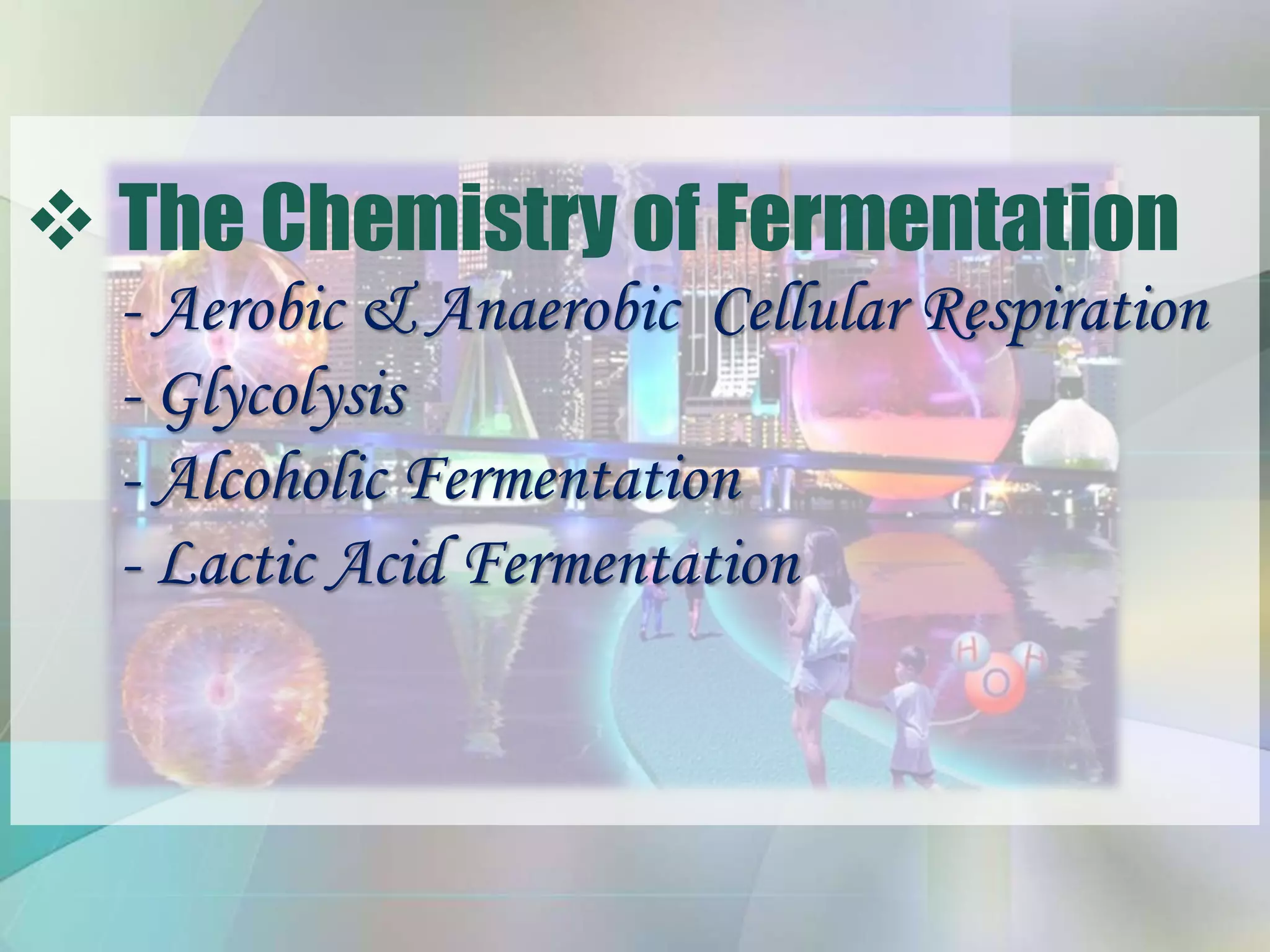Fermentation is a process by which microorganisms break down organic matter in the absence of oxygen. There are two main types of fermentation - alcoholic fermentation which produces ethanol, and lactic acid fermentation which produces lactic acid. Fermentation is used to produce many foods like bread, yogurt, cheese, and beverages like wine. It is also used industrially to produce chemicals like acetone, butanol and ethanol through ABE fermentation of Clostridia bacteria, and amino acids through the growth of various microorganisms. Common products of fermentation include foods, industrial chemicals, enzymes, vitamins and pharmaceuticals.






























